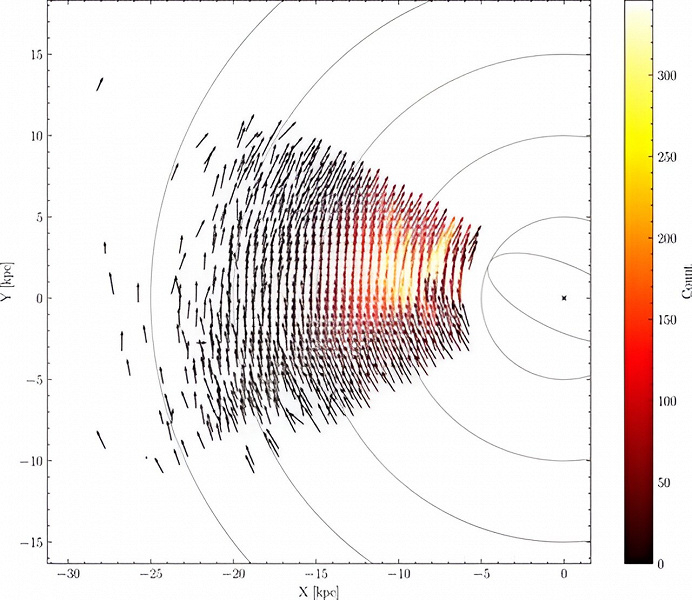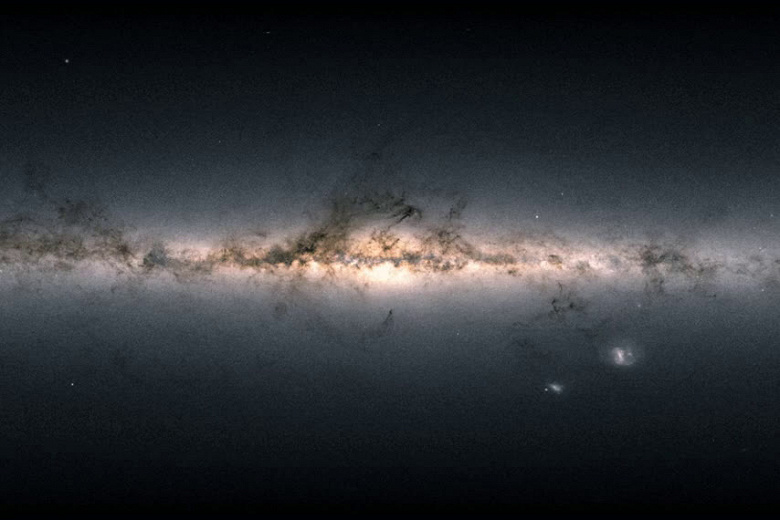Stellar velocities at the edge of the Milky Way reveal the problem of dark matter density in the center of the galaxy
Stars on the outskirts of the Milky Way are moving more slowly than previously thought. A team of physicists from the Massachusetts Institute of Technology (MIT) discovered this feature by studying data obtained using the Gaia space telescope and the ground-based APOGEE instrument.
During the study, physicists analyzed information about more than 33,000 stars in the Milky Way, which covered all the remote corners of the galaxy. They measured the rotation speed of these stars and noticed that those stars at the edge of the galaxy were moving slightly slower than expected.
The researchers converted their data into a model of the distribution of dark matter, which is unfavorable for observation because it does not emit light and interacts with visible matter only through gravitational interaction. However, it does influence the motion of stars.
The findings suggest that the Milky Way's core contains less dark matter than previously thought. This has significant implications for ideas about the distribution of dark matter, since its presence is considered a key factor maintaining the stability of galaxies and explaining their observed rotation rates. If the assumption about a lighter core of the Milky Way is confirmed, then this may require a revision of ideas about galactic dynamics.
Observing the rotation speed of galaxies is one of the key aspects of astronomy. In the 1970s, astronomer Vera Rubin noticed that the speed at which galaxies rotate could not be explained by visible matter alone. The circular speed of stars orbiting the galactic center remained constant throughout the entire length of the galaxy, indicating the presence of additional invisible matter that influences their motion.
The work of Vera Rubin became one of the first convincing evidence of the existence of dark matter – a component believed to make up the majority of all matter in the universe. Astronomers then discovered similar rotation curves in distant galaxies, supporting speculation about dark matter. However, only recently have astronomers begun to study and plot the rotation curve of our own galaxy based on stellar data.
In 2019, Anna-Christina Eilers, a physics major who teaches at MIT, became interested in studying the rotation curve of the Milky Way. She used previous data collected and published by the Gaia telescope, which collected statistical information on stars up to 25 kiloparsecs (about 81,000 light years) from the galactic center.

Analyzing this data, Eilers noticed that the Milky Way's rotation curve appeared flat with a slight dip at the outskirts, which is similar to other distant galaxies. This indicated a high density of dark matter in the galactic core. However, a new batch of data provided by the satellite added stars up to 30 kiloparsecs away, that is, almost 100,000 light years from the center of the galaxy.
Eilers' team took the new Gaia data and supplemented it with measurements from APOGEE (Apache Point Galaxy Observatory), which analyzes the characteristics of more than 700,000 stars in the Milky Way, including brightness, temperature and composition.
Using the data, the team determined the exact distances for more than 33,000 stars and created a three-dimensional map of where these stars are located within 30 kiloparsecs of the Milky Way. They then fed this map into a rotational velocity model to predict the speeds of each individual star, given the distribution of other stars in the galaxy. From this, scientists plotted an updated rotation curve for the Milky Way, plotting each star's speed and distance on a graph.
«It was here that we encountered unusual results», — says research group member Lina Nekib. Instead of the expected slight decline at the outskirts, the team found a sharper decline. This indicates that the outer stars are moving even slower than expected.
By converting the rotation curve into the amount of dark matter contained in the galaxy, the researchers found that the center of the Milky Way may contain less dark matter than previously thought.
«This result contradicts previous observations. Further exploration of our result has important implications. This could indicate the presence of additional hidden mass outside the galactic disk or lead to a rethinking of the equilibrium in our galaxy. We intend to turn to high-resolution simulations of galaxies similar to the Milky Way to find answers to these questions», — says Nekib.

